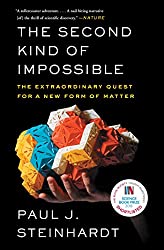
Rating: 8.0/10.
Published over 40 years ago in 1978, this book gives a basic overview of material science and structural engineering. It uses mostly intuition and only a bit of math, and interleaves a lot of stories giving examples of structures like bridges, planes, churches, animals, clothing, etc. This is one of Elon Musk’s favorite books, and I learned a lot from it. However, the writing is a bit rambly, and often I don’t know what point the author is trying to make with the examples; I’d prefer if the author stays to the point.
Some basic properties of materials:
- Stress is the amount of force applied to a material; strain is how much it is stretched. The stress-strain diagram shows the relationship between them. Young’s modulus for a material is stress/strain and is a measure of elasticity.
- Ductile material is able to stretch without breaking; brittle material is not. Work of fracture is the amount of energy needed to break it. For metals, often inverse correlation between work of fracture and tensile strength (maximum force it can withstand). Mild steel is better for large structures; high-tensile steel is better for small components.
- Critical Griffith crack length: maximum length above which a crack becomes self-propagating and dangerous. Below this length, the material stretches such that it takes energy to increase the crack.
Structures rely more on stability than strength, and you can model it using scaled-down versions because the cube-square law doesn’t apply. Stability can be predicted by examining the “thrust line”. The beam is important because it takes lateral force and avoids a roof exerting force outwards to the walls, which would make it unstable.
Sheer is similar to tensile stress/strain, except that material can have different sheer properties in different directions. A “bias cut” aligns the cloth at a 45 degree angle, which maximizes the elasticity. Torsion is a major factor for designing airplane wings that don’t fall off.
Compression is different from tension in that the compressive strength decreases quadratically with the length of the structure, whereas tensile strength is unaffected. Under compressive stress, materials either crack and sheer (if brittle) or bend and deform (if ductile). Euler gave a formula for buckling strength of a rod, which is higher when both ends are clamped.
Actual design is a tradeoff between various properties of materials, including weight and cost. Designing for safety is an inexact science, so we often include a margin of error for various forces and effects that we have missed. Weight is often a cause for failure, since it tries to make things stronger, but at a cost of stability, so is often detrimental. Finally, engineers shouldn’t optimize solely for efficiency, there is value in aesthetics as well, even though it can’t be quantified.



